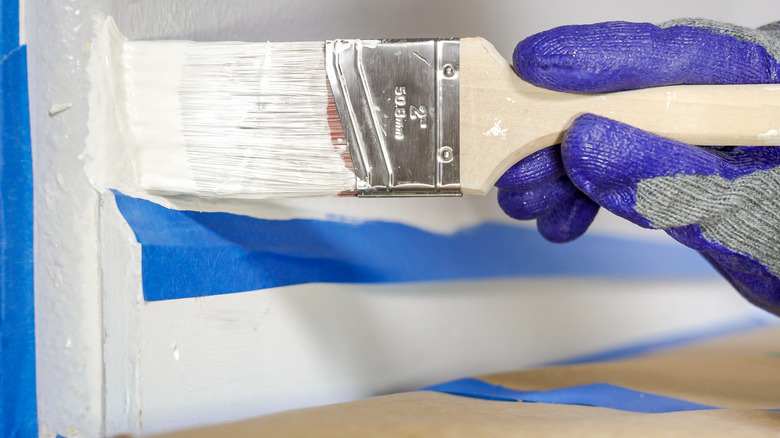Should You Paint Your Walls Or Trim First?
It's time to update the paint color in your living room or perhaps a bedroom or two. You're excited about the new shade but want to be sure you're doing what's necessary to make this a fast and affordable project. You could hire a professional to do the work for you, which costs, on average, $990 to $1,320 per room, according to Fixr; the alternative is to do the work yourself and pocket the extra.
There is a big question, though. What comes first, the paint on the walls or the paint on the trim? If you paint the walls first, you risk getting paint onto those new surfaces when you go to do the harder work of updating the trim. On the other hand, painting the trim first means you may have to go back to it later to touch up and clean up any pigment that gets on them. Is there an answer to this conundrum? Yes, painting like a professional makes a big difference.
In a hurry?
You may have carved out a few extra hours on your weekend to refresh the hue of your living room with some new paint; however, you don't have a lot of time to make the process an exhibition. Doing a good job is worth the extra time, though. Nelson J. Greer Painting Contractors, Inc. suggests painting your walls first when you are in a hurry. This allows you to make significant changes to the room within a matter of a couple of hours, even with two coats.
Trim work is more tedious and requires time and attention to get it right and ensure a clean, crisp finish. The walls are easier to paint and don't necessarily need as much effort put into the details. So, if you do not have a lot of time right now, start with the walls and come back to the trim with more help. It will pay off in the end.
Do the hard work yourself
Because there is no wrong place to start, you can paint the trim first if you would like to do so. Some people do this because they want to get the more tedious and time-consuming aspect of the project done first, according to MB Jessee Painting, as tasks like the window trim and crown molding need that extra bit of effort to get it just right.
Also, doing the trim first makes sense if you plan to "cut in" the walls. This is a process in which you paint a straight edge along the molding, trim, and other barriers first and paint the rest of the surface of the walls after that, filling in the open space. By focusing on the trim as a primary first step, any splashes or painting mistakes that end up on the wall will be covered up when you cut in the walls, hiding just about anything with ease.


